Advertisement
New disease continues to spread in beech trees across Mass.
Resume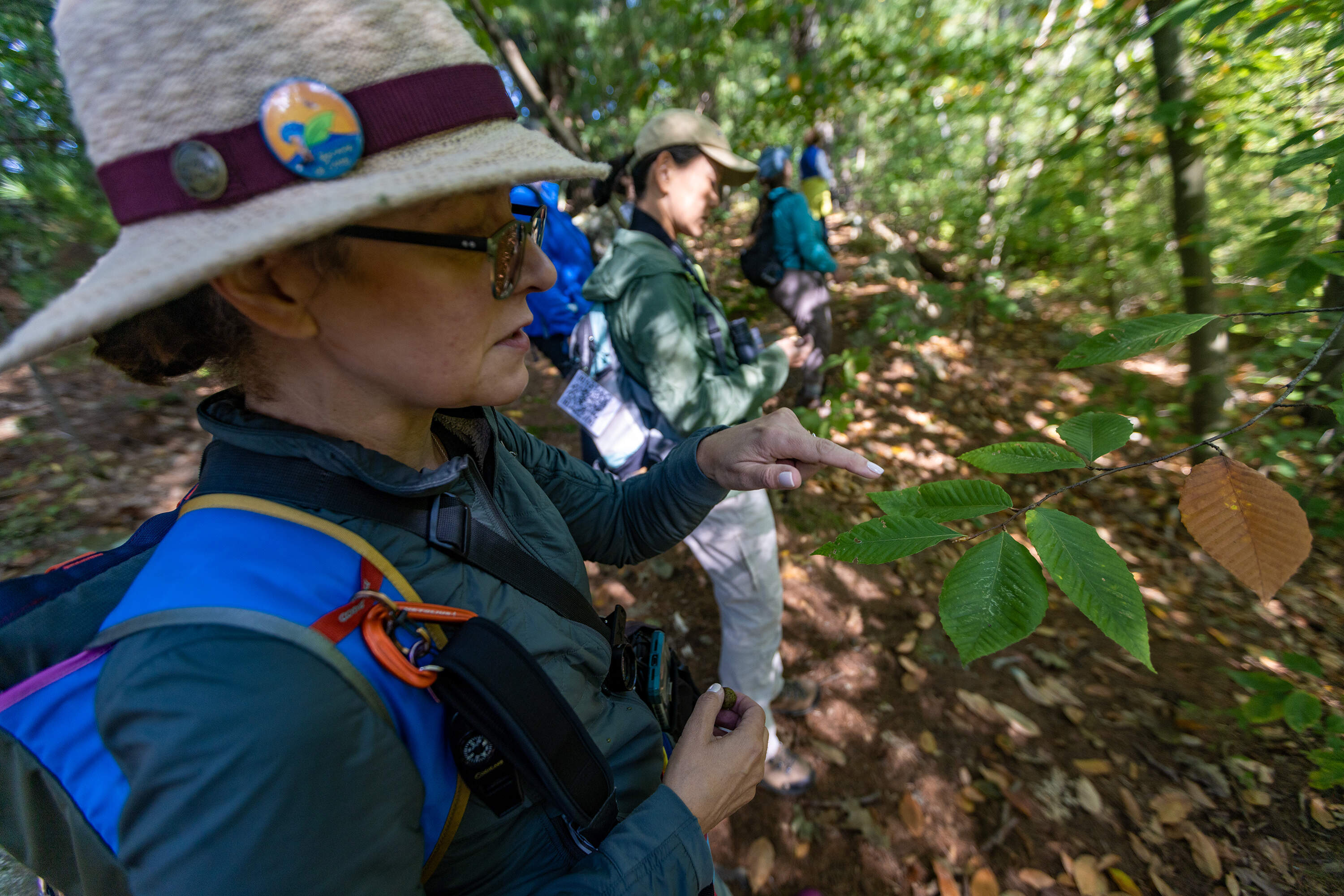
A new tree disease has spread in forests in Massachusetts, joining invasive pests and climate change as top priorities for foresters to address.
The state has found beech leaf disease in more than 90 communities since it was first discovered in the state in 2020.
“Lately this has been one of our biggest concerns and my team devotes a lot of time to it. We do expect to see a lot of long-term impact and trees lost from it,” said Nicole Keleher, forest health program director at the state Department of Conservation and Recreation.
Beech leaf disease is caused by an unusual parasite: a nematode, which is a microscopic roundworm, that infects the leaves and buds. Researchers believe that it may be spread by birds, insects and wind. This makes it more difficult to treat than visible insects like the emerald ash borer that can be somewhat contained by asking people not to transport wood between forests, according to Keleher.
Infected leaves can develop dark patches or stripes, and often will curl up. The infection causes the tree's leaves to fall off and can eventually starve the tree, which can die within a few years. (See more about how to identify the disease here.)
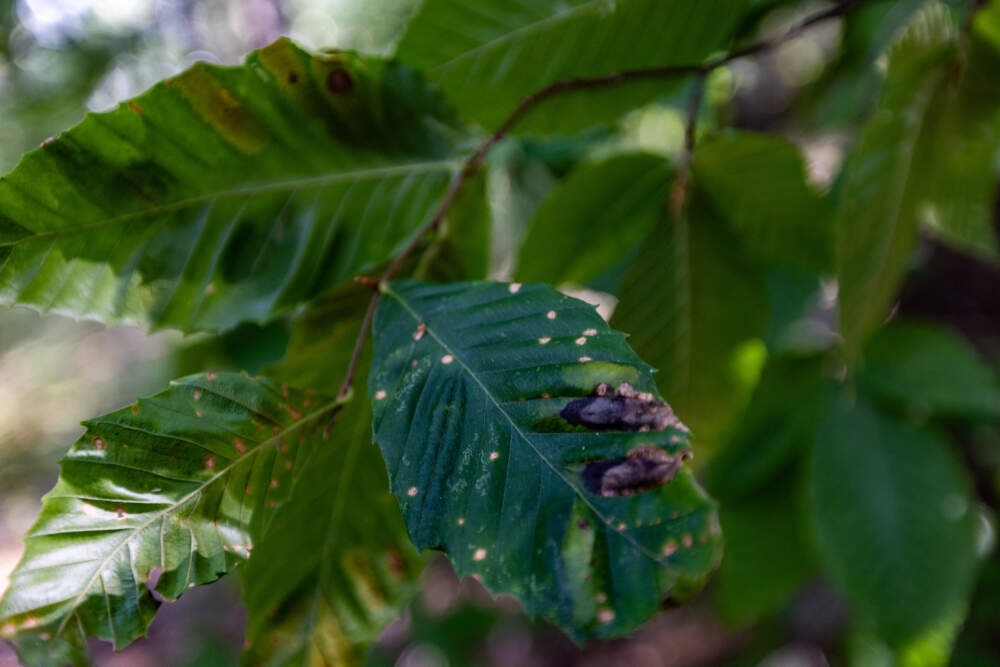
In areas “where we first identified the disease, we're seeing a significant amount of decline and occasional occurrences of tree death,” said Keleher. The most affected areas are Plymouth and Bristol counties, where the disease was first identified, and Cape Cod.
Native to the eastern U.S., the American beech has a smooth gray trunk and a wide canopy. The U.S. Forest Service estimates it represents 10% of forests in Massachusetts. The tree is also planted along streets, parks and cemeteries. It provides habitat and many animals feed on beechnuts.
Beech leaf disease was first found in the U.S. in Ohio in 2012 and has spread to over a dozen states. While the disease is moving fast, research is still in early stages. For instance, it took five years just to confirm that the infection was caused by a worm. Experts say finding treatments will take more time.
“There is a lot of work going into investigating different chemicals and methods and methodologies. But it's a slow process,” said Keleher.
The most promising treatment so far comes from a chemical typically used as a fertilizer, said Robert Marra, a forest pathologist with the state of Connecticut who is part of a national beech leaf disease research group.
“In very simple terms it is believed that [the chemical] stimulates the plant's defenses,” he said.
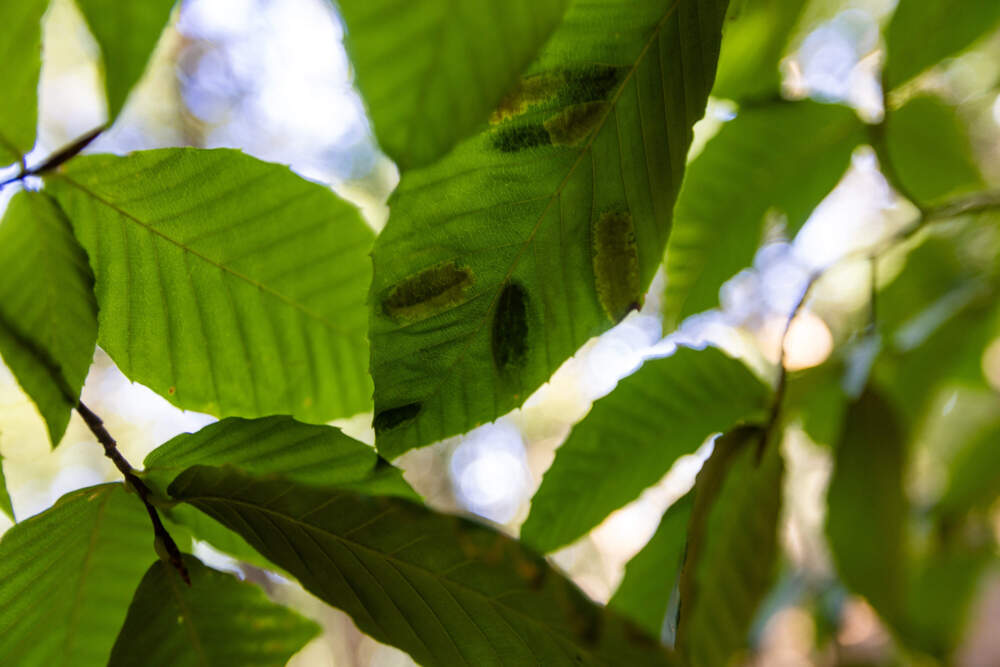
It’s also nontoxic and relatively cheap. Marra said researchers in Ohio have strong evidence it helps trees to live and thrive with the infection, but the study’s results haven’t been published yet.
And some trees appear to be able to tolerate the disease without any help.
“We see trees that are surrounded by trees that are succumbing rather dramatically to the disease. And these few trees have few symptoms,” he said.
Researchers at the Holden Arboretum in Ohio are studying these seemingly resistant trees in hopes that they could breed them and use them in reforestation. But it’s too early to say if these trees are actually resistant.
Dig in deeper to this story by listening to WBUR's The Common:
Massachusetts state forest officials say there isn’t enough evidence to adopt any treatments yet. For now, they're monitoring the spread of the disease.
And this is where volunteers come in. In some cases, citizen observations have alerted state foresters to new occurrences of the disease.
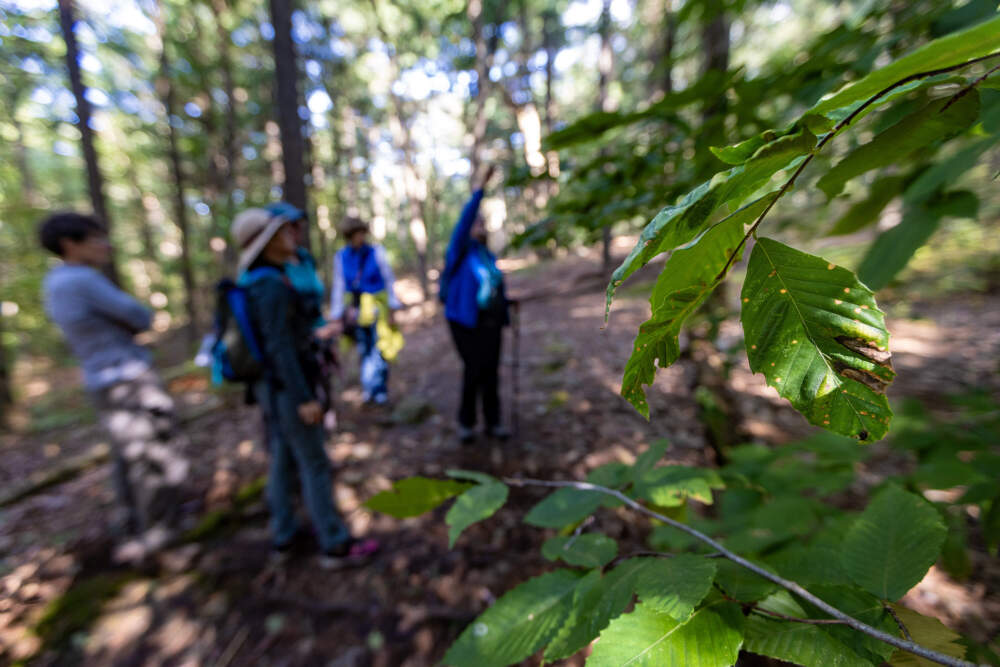
The conservation group Earthwise Aware does weekly plant and wildlife surveys of the Middlesex Fells in Winchester, and has documented cases of beech leaf disease there.
“We can really alert very early when there is an issue,” said Claire O’Neill, director of the nonprofit’s biodiversity and climate participatory science program. She said that because they look at the ecosystem as a whole, they can spot what is unusual.
O’Neill and her group uploads the information about trees infected to the website i-Naturalist and other citizen science reporting tools. Those can serve as a starting point for the state’s Forest Health Program to monitor the spread of the disease.
American beech also face other threats, which may make them more vulnerable to the leaf disease. For almost a century, the trees have suffered from beech bark disease, a combination of insect and fungus attacks on the tree trunk. The infection wiped out most big beech trees in Massachusetts' forests.
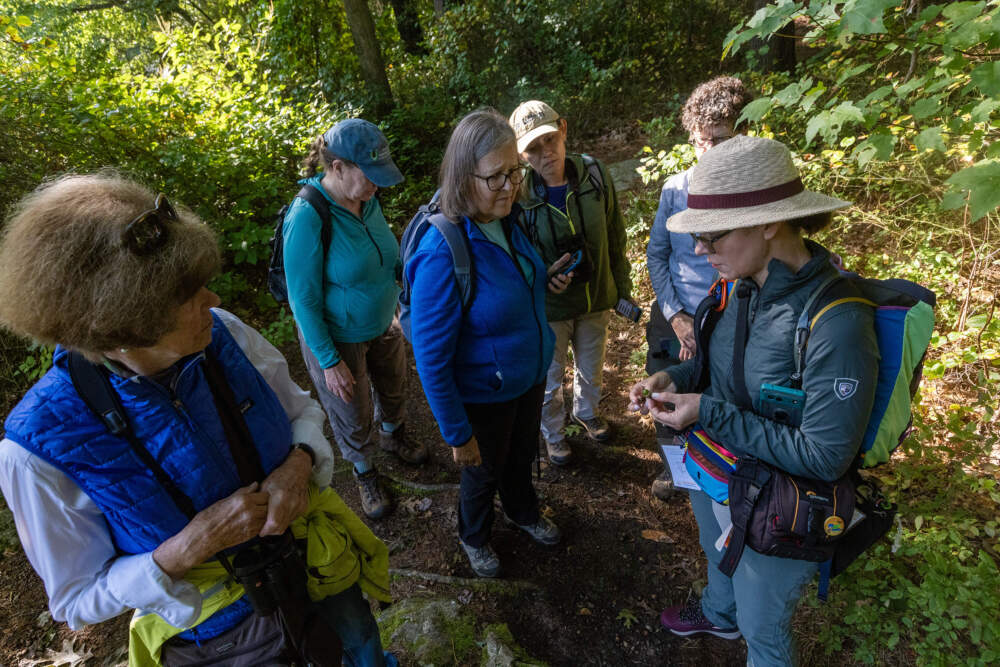
The trees also face challenges from extreme weather spurred by climate change. In general, they have been more resilient to heat and drought compared to other trees in the Northeast, said Pamela Templer, a biology professor at Boston University.
“A really important thing to understand is how climate change might be making these trees vulnerable to this pest. But I think it's too early to say,” she said.
While researchers are trying to find treatments, the state is monitoring the spread of the disease. Individuals can help by filing a survey at the Department of Conservation and Recreation's website.
For now, the main recommendation for people who have beech trees in their yards is to give them nutrients and water so they're strong enough to fight the disease.
This segment aired on October 24, 2023.
